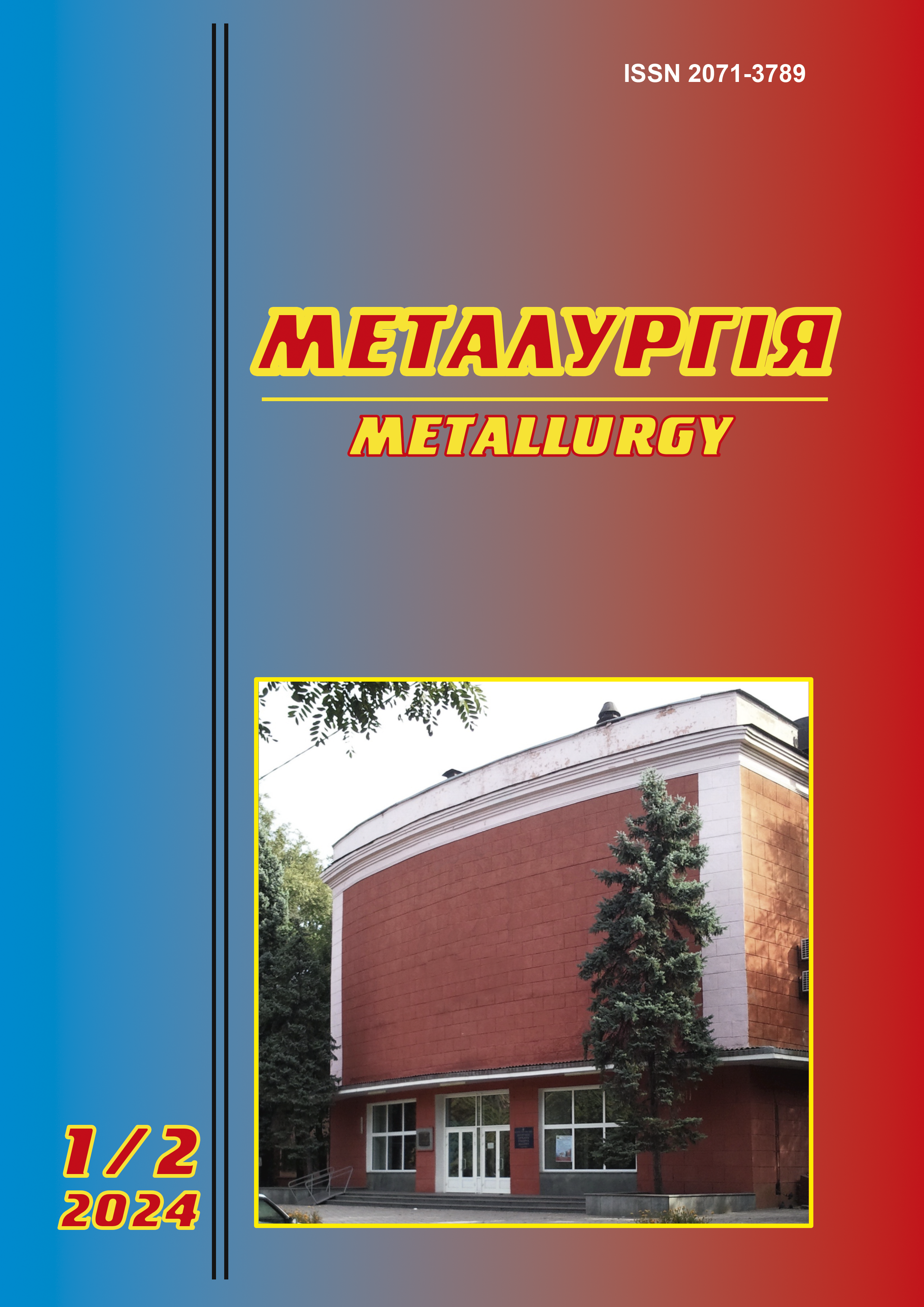POSSIBILITIES OF APPLICATION OF POWDER CONSUMABLE ELECTRODES FOR ELECTROSLAG TECHNOLOGIES
Abstract
The work provides examples of industrial applications of electroslag technology that require consumables of varying chemical composition, in particular consumable electrodes. Options for alloying the deposited metal are considered, and the advantage of using a powder electrode is proven. A design has been proposed for a powder consumable electrode consisting of a steel box profile (steel 3ps, 3 kp) and a fixing tape (steel 08 kp), which also works as a dispenser for a charge consisting of crushed ferroalloys. Electroslag ingots with a diameter of 60 mm, obtained using powder electrodes, correspond in chemical composition to steels 20Х13, Х12 and cast iron ЧХ16. It has been established that the chemical composition of the ingots meets the requirements of the relevant DSTU. There is also a refining effect, as evidenced by the sulfur and phosphorus content. When examining the electrode ends, it can be seen from their appearance that there is only one source of droplet detachment on the end of a solid electrode, which is located at the top of the cone, which coincides with the center of the electrode end.At the end of the powder electrode, several sources of droplet formation are formed, which are placed along the perimeter of the steel box profile. This ensures uniformity of heat flow and makes the crystallization front flatter. The work suggests that when ferroalloys with a high melting point are used in powder electrodes, a refinement of the structure (inoculating effect). Crystallization conditions were evaluated by the calculated coefficients of the crystallization front (Kf.k.) and the measured depth of the conical part of the metal baths (Н). The shape of the metal bath was fixed with iron sulfide during electroslag smelting of the ingot with a diameter of 70 mm. It was established that during electroslag smelting with a solid electrode Kf.k. = 0.65, H = 21.1 mm, and when using a powder electrode Kf.k. = 0.87, H = 15.5 mm. It was established that during electroslag surfacing with a powder electrode, a shallow metal bath with a flat crystallization front is formed.
References
2. Технология электрической сварки металлов и сплавов плавлением / Под ред. Б.Е. Патона. Москва: Машиностроение, 1974. 768 с.
3. Электрошлаковая технология в машиностроении / Б.И. Медовар, В.Я. Саенко, И.Д. Нагаевский, А.Д. Чепурной ; под общ. ред. Б.Е. Патона. Киев: Техніка, 1984. 215 с.
4. Тепловые процессы при электрошлаковом переплаве / Под ред. Б.И. Медовара. Киев: Наукова думка, 1978. 304 с.
5. Электрошлаковая сварка и наплавка / Под ред. Б.Е. Патона. Москва: Машиностроение, 1980. – 511 с.
6. Клюев М.М. Электрошлаковый переплав. / М.М. Клюев, С.Е. Волков. Москва: Металлургия, 1984. 208 с.
7. Дудко Д.А., Рублевский И.Н. О капельном переносе электродного металла при электрошлаковой сварке. Автоматическая сварка, 1958. №4. С. 24-31.
8. Безбах Д.К. Исследование предварительного нагрева электрода для повышения производительности сварки. Автоматическая сварка, 1962. №4. С. 28-29.
9. Чуманов И.В., Пятыгин Д.А. Особенности электрошлакового переплава на постоянном токе с вращением расходуемого електрода. Известия вузов. Черная металургія, 2006. № 3. С. 22-25.
10. Электрошлаковая технология за рубежом / Под ред. Б.Е. Патона, Б.И. Медовара. Киев: Наукова думка, 1982. 320 с.
11. Пустовгар А.В. О методике расчета сварочной порошковой проволоки. Вісник СумДУ, 2000. № 15. С. 113 – 117.
12. Технологическая инструкция по дроблению материалов. ТИ 283.25100.11037. ТИ ПП 3-77. Днепропетровск: Днепропетровский метизный завод, 1977. 4 с.
13. Технологическая инструкция по размолу материалов. ТИ 283.25100.11037. ТИ ПП 4-77. Днепропетровск: Днепропетровский метизный завод, 1980. 8 с.
14. Технологическая инструкция. Производство порошковой проволоки. ТИ 283.25000.11127. Днепропетровск: Днепропетровский метизный завод, 1980. 16 с.
15. Затуловский С.С. Суспензионная розливка. Киев: Наукова думка, 1981. 260 с.
16. Бабаскин Ю.З. Структура и свойства литой стали. Киев: Наукова думка, 1980. 240 с.

 ISSN
ISSN 


